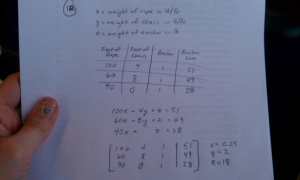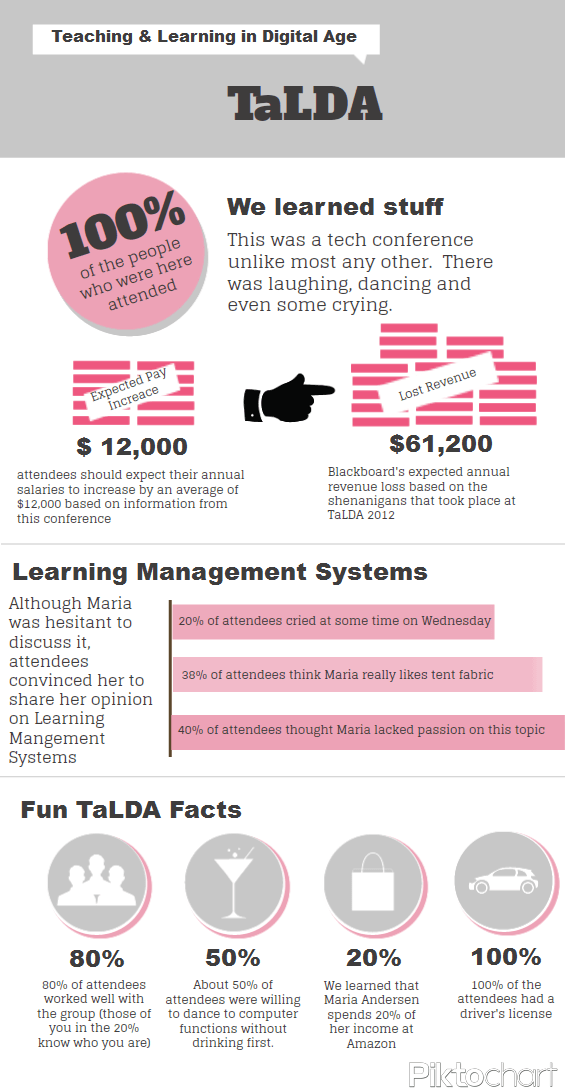This “Teaching with Tech” column was originally published for MAA Focus but is no longer available on the MAA website. This is a republish of the original column.
Recently, I found myself writing a College Algebra test in an airport lounge. Ideally, I write tests from the comfort of my office, with many alternative textbooks within an arm’s reach to use as a reference to find good test problems. But there I was in an airport, and although I didn’t have a shelf full of alternative texts with me (talk about an overweight suitcase), I did have the problems from those books. That’s when I realized I realized that I should share how I use my phone camera to make my professional life easier. In this instance, before I left my office, I had taken a few minutes to use my phone camera to photograph a few pages of the problem sections of textbooks I typically use as reference. I was carrying all those candidate test problems with me on my phone. [NOTE: While I could also use something like Coursesmart to access alternative texts, I could not rely on finding dependable or free Internet access in airports.]
Procrastinating now, I began scrolling through the 1000+ photos on my phone and I realized that at least half of those photos were related to my job responsibilities. The camera on my phone has become almost as valuable to me as my computer, and I think it can be for you too. Here are some suggestions for how you might get better use of that camera-phone you’re carrying around (or perhaps decide that it’s time to buy one of those smartphones after all).
Transfer an application problem from a text to the classroom projector: If you’re in a classroom that has no document camera OR if you want to make sure that the application problem you’re about to go over is visible to a recorded screencast on the computer, you can transfer the problem to the computer in about 60 seconds (do it while the students are working on another problem). Take a photo of the problem, email it to yourself, and bring it up on the screen (or as an alternative to email, use Bluetooth to do the transfer).
Carry the problem sections of many different textbooks with you for test/assignment creation: Take 5-10 minutes and page through the problem sections of several older textbooks. Take photos of the problems that you might consider putting on the assignment. Now when you go home, or leave on that trip, the texts that were in your office can come along without all the extra weight.
Share your lecture notes from class: If you’re in a low-tech classroom, you can easily share the lecture notes with the class digitally (or keep a copy to remind yourself what you covered). Simply take a photo of every board before you erase. The photos can be shared in the online course shell – most everyone can open a jpg image or they could be pasted into a document, but that’s more work! I should note that my students also use their phones to take photos of the problems that they work on the boards (so that they can later print them if they want to see the steps).
Keep a copy of the notes from a research or planning meeting: When our department is planning a schedule for a new semester or I get together with others to plan a big research project, we often take over several whiteboards as we try to make sense of the big picture. At the end of the meeting, I always take photos of all the boards and share the photos with everyone at the meeting. If you meet with graduate students about their research and you write down suggestions for research paths, photograph these notes before sending the student off with them.
Get a copy of that agenda/handout from a meeting: If you’re in a meeting where there are too many participants and not enough handouts, just ask to borrow a handout from someone else and take a photo. Now you have a copy to refer to as well.
Share students’ work for discussion about good critical thinking or nuse of notation: When you’re grading papers, you sometimes see an outstanding example of student work or alternately, you see the same error over and over. Rather than talk about generalities in class, take out that phone and snap a picture of the student work before you begin to mark it up (without the students’ name of course). Now you can share that work in the next class period to talk about why it is particularly excellent, or why the error is so egregious. It is particularly powerful to take several photos of the same error made by different students in slightly different ways, or several great examples of student work so that you can discuss the good points of many different approaches. I think this could be particularly powerful in a class involving lots of proofs, as students find it difficult to understand what makes up a good proof. Seeing many student proofs side-by-side could help students to begin distinguishing the good from the bad.
Share a hint about a mathematical solution: If a student or colleague emails about a particular mathematical question, consider writing out a few steps on paper, taking a photo, and then emailing the photo for a prompt on what to do next. This can often be faster than trying to formulate a response in an email program, especially since you can include annotation easily (arrows, circles, highlighting, etc).
Tips for Conferences
- Slides: If you’re at a talk on unpublished work and the slides are flying by too fast to take notes, try snapping pictures of each slide instead. Try to sit off to the side so that you’re not too distracting, and don’t use a flash.
- Receipts: If you go out to eat in a group and the restaurant will not give you individual receipts, just take a photo of the group receipt for your records. For that matter, you can take a photo of all your receipts for your own records before you submit them.
- Name Badges: If you meet someone you want to remember and they don’t have a business card, photograph their name badge instead. I usually take a photo of my own name badge too, in case I show up for a session and have forgotten my badge in my hotel room.
- Buy it later: If you find a book you want, but don’t want to carry it in your luggage, take a photo of it instead of writing it down. This works for articles you mean to read later too (capture the title & authors with a picture).
- As a copier: Remember that your phone can act as a copier (of sorts) on the road. If you need to share a handwritten document with others, you don’t need a copy machine. For example, I needed to share the handwritten exam solutions I wrote on the plane with the exam proctor. I photographed the solutions and emailed them to her.
- Logistics: When you park in the airport parking before the event, take a picture of where your car is (then when you arrive home tired and jet-lagged, you’ll be able to find your car again). Take a photo of your luggage tag from the airlines before your luggage is sent off to the cargo hold. Now if your luggage is lost, you have all the information that was on that original tag AND a photo of the luggage. If you rent a car, take a photo of the license plate to make it easier to register the car at the hotel.
Most of us did not grow up with an ever-present phone in our pockets and It involves a paradigm shift to stop treating photos as an expensive resource. Challenge yourself to take more photos to streamline your workflow, improve your teaching, and help your students learn more. It’s a snap!









